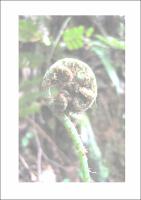| Compartilhamento |


|
Use este identificador para citar ou linkar para este item:
http://tede2.uefs.br:8080/handle/tede/1135| Tipo do documento: | Dissertação |
| Título: | Florística e fitogeografia das samambaias e licófitas de fragmento de Mata Atlântica na Serra da Jibóia, Santa Teresinha, Bahia, Brasil |
| Autor: | Macedo, Taís Soares  |
| Primeiro orientador: | Góes Neto, Aristóteles |
| Resumo: | No Estado da Bahia, estudos envolvendo as samambaias e licófitas ainda são incipientes, existindo uma lacuna no conhecimento das espécies, em especial àquelas ocorrentes na Mata Atlântica. A Serra da Jibóia, localizada no Município de Santa Teresinha, Bahia, Brasil, nas coordenadas geográficas 12º51’S e 39º28’W, possui diversas formações vegetacionais. Apresenta-se circundada com áreas de caatinga na base, mata higrófila na encosta e, no topo, sobre um afloramento gnáissico-granítico, se desenvolve uma vegetação de campo rupestre, sendo uma área de extrema importância biológica, prioritária para conservação da biodiversidade da Mata Atlântica brasileira. O presente trabalho teve como objetivo realizar um levantamento florístico e fitogeográfico das samambaias e licófitas ocorrentes no fragmento de Mata Atlântica da Serra da Jibóia, buscando compreender suas relações florísticas com outras formações vegetacionais do país e contribuir para o conhecimento da flora vascular da região, bem como complementar o conhecimento a respeito da Mata Atlântica. Realizou-se coletas mensais, durante os anos de 2009 e 2010, seguindo-se as técnicas usuais. Também foram analisados materiais das coleções dos herbários ALCB, HRB e HUEFS. Todo material coletado encontra-se depositado no HUEFS. Foram amostradas 97 espécies, em 51 gêneros e 22 famílias. Seis espécies constituem-se novos registros para a região Nordeste e três para o Estado da Bahia. As famílias mais representativas foram Dryopteridaceae (17 spp.), Polypodiaceae (16 spp.), Pteridaceae (12 spp.) e Hymenophyllaceae (10 spp.). A maioria das espécies ocorre como epífita (43%), 39% terrestre, 4% rupícola, 3% como hemiepífita e 8% com mais de um tipo de hábito. São apresentadas chaves de identificação, distribuição geográfica e comentários taxonômicos relevantes. A análise de similaridade florística com outras 26 áreas, correspondendo a diferentes formações vegetacionais do país, mostrou que a flora de samambaias e licófitas da Serra da Jibóia está relacionada com o Sul da Bahia e Sudeste do Brasil. |
| Abstract: | (Floristic and phytogeography of ferns and lycophytes of Atlantic Forest fragment in the Serra da Jibóia, Santa Teresinha, Bahia State, Brazil). Studies in Bahia State involving ferns and lycophytes are still few, so there is a gap in knowledge of species, especially those occurring in the Atlantic Forest. Serra da Jibóia, located in the Municipality of Santa Teresinha, Bahia State, Brazil, in the geographic coordinates 12º51'S and 39º28'W, presents several vegetation formations: areas of caatinga in the base, humid forest on the slope and in the top, on gneiss-granite outcrop, a ‘campo rupestre’ (grasslands with rocks) vegetation. The area is considered of extreme biological importance and priority for biodiversity conservation of Brazilian Atlantic Forest. This study aimed to provide a floristic and phytogeographical survey of ferns and lycophytes of the fragment of Atlantic Forest in the Serra da Jibóia, trying to understand their floristics relations with other vegetation formations in the country and contribute to the knowledge of the vascular flora of the region and complement the knowledge about the Atlantic Forest. Monthly collections during the years 2009 and 2010 were made, following the usual techniques. Materials from the collections of herbaria ALCB, HRB and HUEFS were also reviewed. All material collected is deposited in HUEFS. 97 species in 51 genera and 22 families were found. Six species are new records for the Northeast region and three for the Bahia State. The most representative families were Dryopteridaceae (17 spp.), Polypodiaceae (16 spp.), Pteridaceae (12 spp.) and Hymenophyllaceae (10 spp.). Most species occurs as epiphyte (43%), 39% terrestrial, 4% lythophyte, 3% hemiepiphyte and 8% with more than one type of habit. Identification keys, geographic distribution and important taxonomic comments are presented. The analysis of similarity to other 26 areas, representing different vegetations formations of the country, showed that the flora of ferns and lycophytes of the Serra da Jibóia is related to the south of Bahia and Southeast Brazil. |
| Palavras-chave: | Samambaias Licófitas Floresta Atlântica Bahia Ferns Lycophytes Atlantic Forest |
| Área(s) do CNPq: | CIENCIAS BIOLOGICAS::BOTANICA |
| Idioma: | por |
| País: | Brasil |
| Instituição: | Universidade Estadual de Feira de Santana |
| Sigla da instituição: | UEFS |
| Departamento: | DEPARTAMENTO DE CIÊNCIAS BIOLÓGICAS |
| Programa: | Mestrado Acadêmico em Botânica |
| Citação: | MACEDO, Taís Soares. Florística e fitogeografia das samambaias e licófitas de fragmento de Mata Atlântica na Serra da Jibóia, Santa Teresinha, Bahia, Brasil. 2011. 131 f. Dissertação (Mestrado Acadêmico em Botânica)- Universidade Estadual de Feira de Santana, Feira de Santana, 2011. |
| Tipo de acesso: | Acesso Aberto |
| URI: | http://tede2.uefs.br:8080/handle/tede/1135 |
| Data de defesa: | 21-Mar-2011 |
| Aparece nas coleções: | Coleção UEFS |
Arquivos associados a este item:
| Arquivo | Descrição | Tamanho | Formato | |
|---|---|---|---|---|
| Dissertação_Taís Soares Macedo.pdf | Arquivo em texto completo. | 6,75 MB | Adobe PDF |  Baixar/Abrir Pré-Visualizar |
Os itens no repositório estão protegidos por copyright, com todos os direitos reservados, salvo quando é indicado o contrário.




